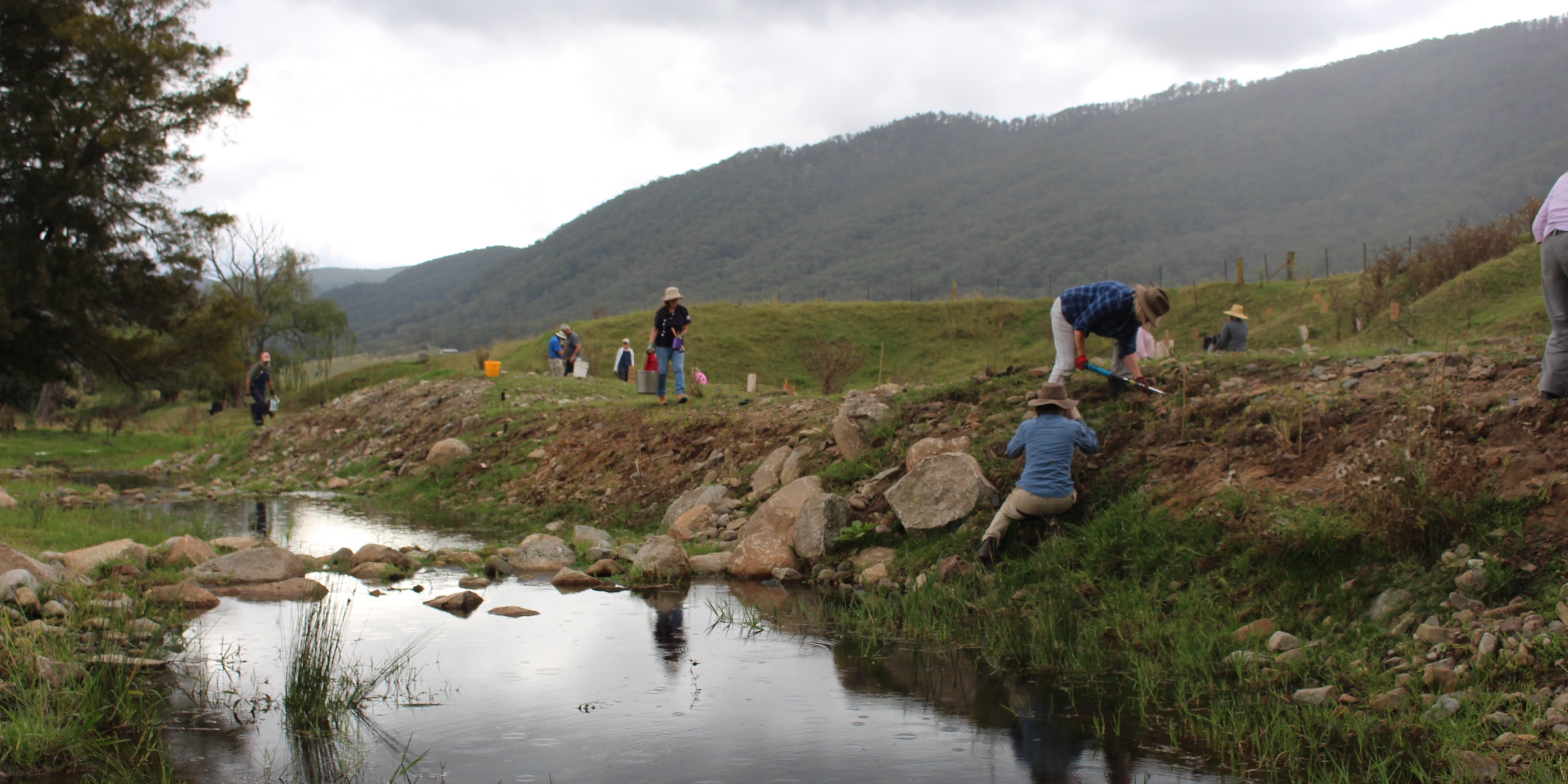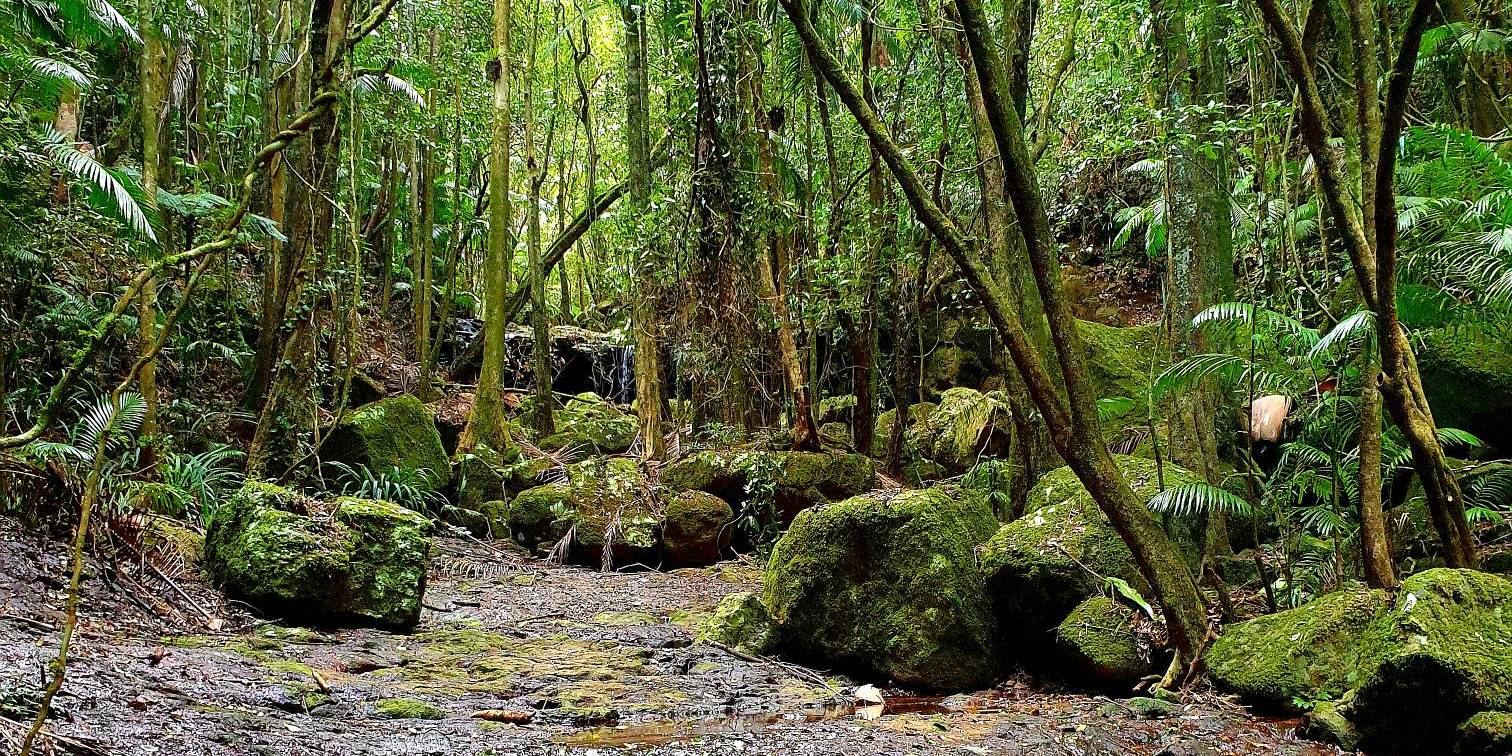How can community groups adapt?
Community groups can implement practical actions that prevent, mitigate or reduce exposure to climate impacts, to help their community and regions adapt and thrive under a changing climate.
They can help their broader communities plan, coordinate, and deliver adaptation actions, as well as share information and send helpful adaptation messages to the community. This reduces the impacts of both gradual climate change and extreme weather events.
Community groups can use AdaptNSW community grants to design and implement specific projects to help their community to increase resilience to climate change.
As climate change impacts every region of NSW differently, it’s essential to understand how climate change will affect your region. To find out more about how the climate is changing where you live, try our interactive climate projection map, and visit the My Region page.
By understanding the vulnerabilities of the local area, and the steps that can be taken to adapt, communities can increase their preparedness and resilience.
Your community group will face its own set of risks caused by climate change. This is because your group, group members, location, activities and facilities are all unique. It’s important to assess and be aware of these different factors and how they might increase your community groups’ exposure to the impacts of climate change. This includes:
- checking with your local council to access climate hazard information such as coastal inundations, flood maps and bushfire-prone areas
- identifying vulnerable groups and individuals – think about the different people in your community group or organisation and their specific needs. Are there any factors that might make them more vulnerable – such as decreased mobility, age or language barriers?
- doing a climate change risk assessment for your community group using the Red Cross Climate Ready Communities tool.
Related Information
Energy Ready Tool Kit: offers help to plan, respond to, and bounce back from climate-related disasters - Energy Consumers Australia
Climate-Ready Communities - A guide to getting started - Australian Red Cross
RediCommunities: Community-Led Resilience for Emergencies A guide & toolkit for communities - Australian Red Cross
Community Assessment & Engagement Tool Targeting the delivery of Red Cross Emergency Services preparedness activities - Australian Red Cross
Resources to help you - Australian Red Cross
Disasters - Australian psychological society
Neighbourhood safer places - NSW Rural Fire Service
Get familiar with what to do in an emergency, such as a bushfire, flood or heatwave, and develop a community group emergency plan. During an emergency, your community group or organisation has an important role to keep your members safe. The most up to date information will be located on your council area's disaster dashboard. Many LGAs in NSW now have access to these important resources.
Consider evacuation procedures, how to access emergency information, how to stay in contact with authorities, and how to keep community group members informed. Community group members should always be trained in first aid.
How a community recovers from an extreme event relies on the ongoing support provided after emergency services have left. Coordinating the actions of community groups and services and sharing information about support available will be important to recovery.
Related Information
Snowy Valleys Disaster Dashboard - Snowy Valleys Council
Community Recovery Handbook - Australia disaster resilience knowledge hub
Climate Wise Communities- Ku-Ring-Gai Council
Australia disaster resilience knowledge hub
Recover from Disasters - Australian Red Cross
Community connection is critical to building resilience. Through connections, we build camaraderie, wellbeing and a sense of belonging.
We can increase resilience to climate change through collaborative, community-driven adaptation activities. These activities can be financially supported by grants and emergency funding, such as the Increasing Resilience to Climate Change community grant program.
Community groups can reduce members’ and community concerns by acting as key sources of information. Your group could spend time talking about climate change action, helping spread the word among the wider community and helping with actions on the ground to prepare for, respond to, and recover from climate impacts.
Related Information
Resources for Climate Change - Australian Psychological Society
Resources for Disasters - Australian Psychological Society
Adapting your community group
Help keep community members safe and reduce damage to premises and equipment by creating appropriate community group policies and procedures.
Use technology to create a communications channel that will allow you to broadcast important information quickly during an extreme event; for example, text messaging systems, apps and email.
The NSW Government supports thriving, sustainable and resilient communities through our Increasing Resilience to Climate Change community grant program. The grants can be used for projects to adapt to climate change, build community resilience, or start your own community group to tackle an issue that is important to you.
Recreational activities need to consider climate risks to ensure environmental conditions are safe for hosting activities. For example, considering risks could include assessing beach and surf conditions before hosting water-based activities such as surfing or surf‑lifesaving. Check to see if your association has a policy or procedure in place!
Protocols should be developed to protect participants from climate risks. For example, to ensure participants are protected from extreme heat, make sure drinking water is always available and include policies to stop, cancel or move activities indoors when necessary.
Recreational groups can also increase their resilience by building shelters or planting native vegetation to provide natural cooling around facilities.
Related Information
Game, Set, Match - calling time on climate inaction - Climate Council
Extreme Heat Policy - Sports Medicine Australia
Extreme Heat Policy - NSW District Cricket Association
Extreme Weather Policy - Tennis NSW
Community service organisations can help to prepare and build the resilience of vulnerable populations in their community, as well as the resilience of their organisation. Resilience‑building activities include training in mental health first aid and taking steps to ensure the mental health of frontline workers is maintained.
Community services need to facilitate and help prepare their community for the impacts of climate change and extreme events. This includes helping communities to plan for, manage and recover from impacts.
Related Information
Walking with People Course - Walk With
The six steps to resilience - Resilient Community organisations
Shelter don't swelter poster - NSW Government
It can be difficult for environmental groups to adapt to climate change. Climate change is making hazards such as bushfires more common and more unpredictable. This makes rehabilitation and restoration work complicated, as plant choices and activities require certain climates, and planted areas can be quickly destroyed by new climate impacts.
Your group can adapt to climate change by ensuring you have access to trusted information about climate impacts in your region. Citizen science and land rehabilitation is far more successful if it is adequately informed. A good example of how to access trusted information is through professional community partnerships, such as the one between Landcare groups and the CSIRO.
If you are conducting regeneration activities, consider accessing seed from trees and plants that are more resistant to climate change, and ensure your collection is genetically diverse.
To ensure that revegetation planting survives into the future, an innovative, on‑ground approach called ‘Climate Ready Revegetation’ has been used by several community groups. The Climate-Ready Revegetation Guide for Natural Resource Managers describes a method to build the adaptive capacity of planted areas by sourcing seed from areas where the climate matches the projected future climate of the revegetation site. Organisations such as local Landcare groups and Greening Australia can help you source suitable seed.
When carrying out revegetation or planting work, plan activities around climate conditions to protect members from dehydration and fatigue. For example, starting work early in the morning, and during the cooler autumn and spring months.
Consider the climate risks to your equipment and make a plan to protect your assets during a climate event. For example, develop a plan to protect your shed or its contents from bushfire.
Related Information
Climate-ready revegetation A guide for natural resource managers. Version 2 - NSW Government
Which Plant Where - Future proof urban landscape projects with climate-ready species
Native Seed Service - Greening Australia
Join a landcare group - LandCare NSW



